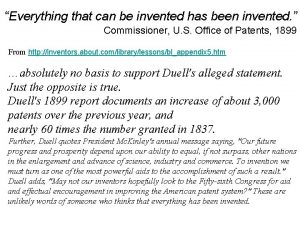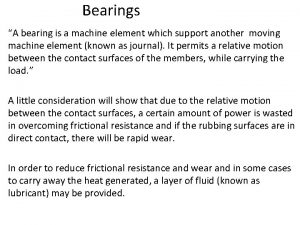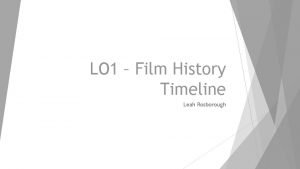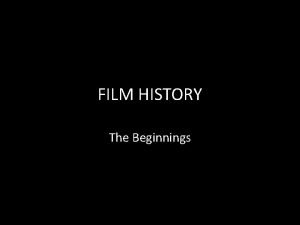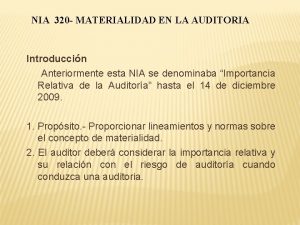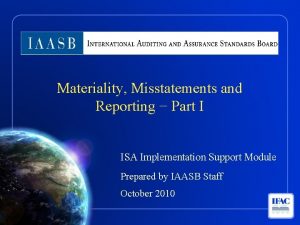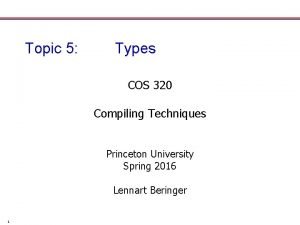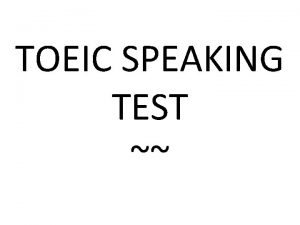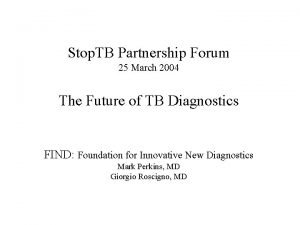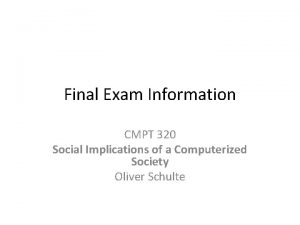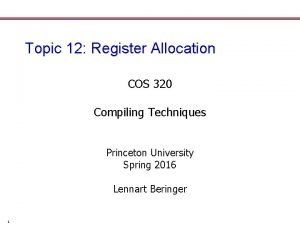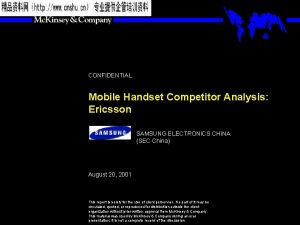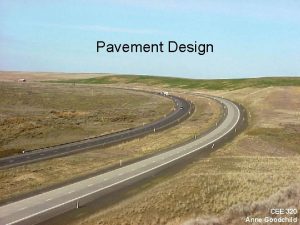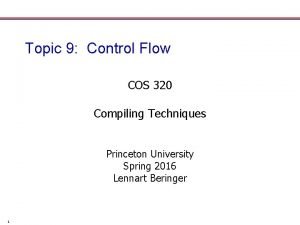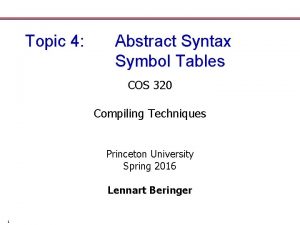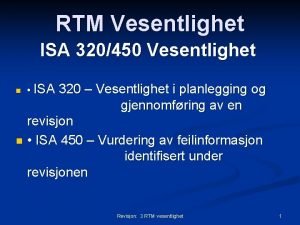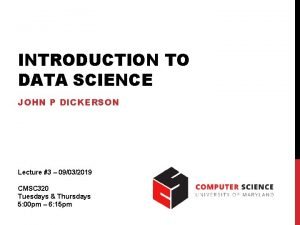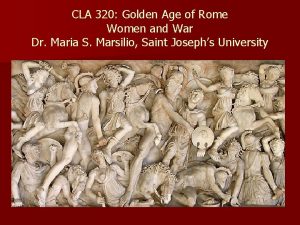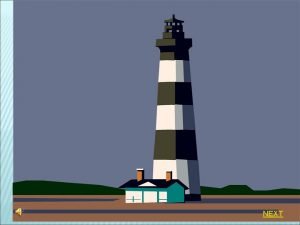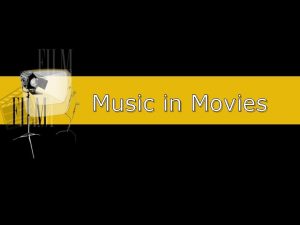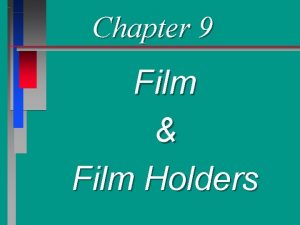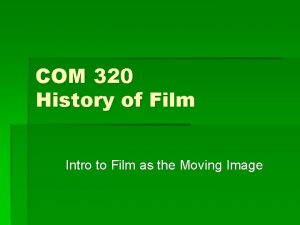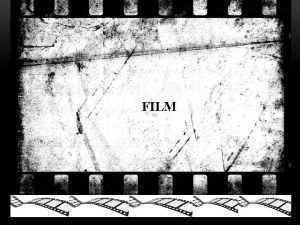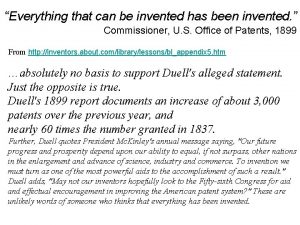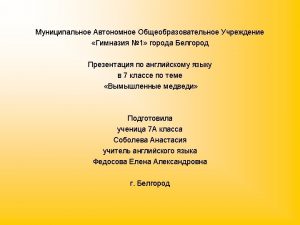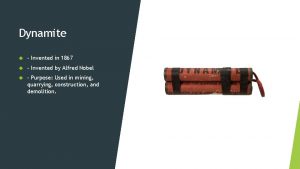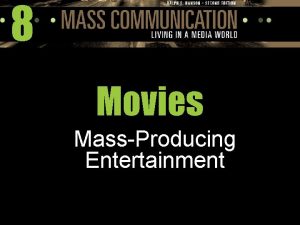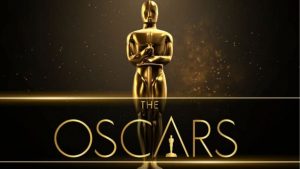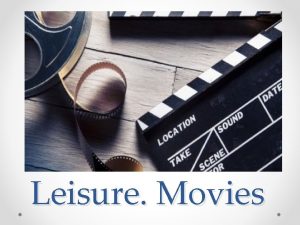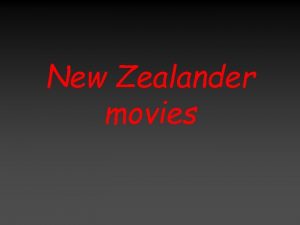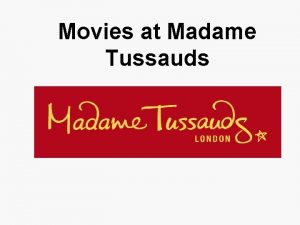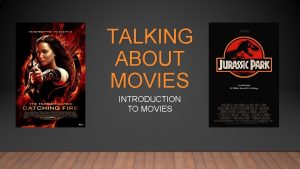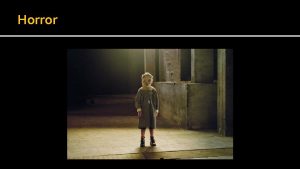Who invented movies COM 320 History of Film



























































- Slides: 59

Who invented movies? COM 320, History of Film

A Network of Influences: "Players" in Early Cinema ? KEY US=working in United States FR=in France GB=in Great Britain S=primary emphasis on scientific study of motion, film E=primary emphasis on creating forms of entertainment, possibly art D=primary emphasis on documenting reality

A Network of Influences: "Players" in Early Cinema ? KEY US=working in United States FR=in France GB=in Great Britain S=primary emphasis on scientific study of motion, film E=primary emphasis on creating forms of entertainment, possibly art D=primary emphasis on documenting reality

Eadweard Muybridge

Eadweard Muybridge (1830 -1904) U. S. Born in England, he was in the U. S. from youth. A photographer, he was most interested in capturing "Animal Locomotion, " the title of his summary work. In 1872, he began his famous series of photo studies, sponsored by former California Governor and railroad “robber baron” Leland Stanford. Muybridge Stanford

Eadweard Muybridge (1830 -1904) U. S. By 1877, the challenge to prove that at some point in a racehorse's stride, all four hooves are off the ground was met; Muybridge had produced a series of quick-exposure photos that captured all moments in the stride via sequentially-placed cameras, and Stanford had won a $25, 000 bet. Muybridge never produced "moving pictures" himself, nor did he intend to, but his work was worldrenowned an influence on many to follow. Muybridge Stanford

Before Muybridge. . .

The site on the old California estate of Leland Stanford where Muybridge did his first series photography—now part of Stanford University


From the documentary The Weird World of Eadweard Muybridge (2010): In addition to his scientific interests, “he was artist, showman…and murderer”…he shot and killed drama critic Harry Larkyns when he learned he might have fathered his wife Flora Muybridge's infant son Florado Kyle Rideout/Josh Epstein’s 2015 biopic Eadweard— the trailer

Eadweard Muybridge’s Series Photography— Animal & Human Locomotion

A Network of Influences: "Players" in Early Cinema ? KEY US=working in United States FR=in France GB=in Great Britain S=primary emphasis on scientific study of motion, film E=primary emphasis on creating forms of entertainment, possibly art D=primary emphasis on documenting reality

Étienne-Jules Marey

Étienne-Jules Marey (1830 -1904) France A physician and physiologist interested in animal movement, he participated in a "co-influential" relationship with Muybridge. His 1882 photographic "gun" was capable of taking 12 pictures per second, originally on a single frame of film (which he called “chronophotography”). In 1887, he was the first to combine flexible film (on a paper roll) and intermittent movement, later adopting celluloid.

Étienne-Jules Marey (1830 -1904) France Marey did not himself create films, but his influence is indisputable. Louis Lumiere credited him: "What did I do? It was in the air. " An 1889 meeting between Marey and Edison convinced Edison that his assistant Dickson's phonograph-based prototype was wrong. Marey, always the scientist, was very open and sharing with Edison!

A Network of Influences: "Players" in Early Cinema ? KEY US=working in United States FR=in France GB=in Great Britain S=primary emphasis on scientific study of motion, film E=primary emphasis on creating forms of entertainment, possibly art D=primary emphasis on documenting reality

Jean Eugène Robert-Houdin

Jean Eugène Robert-Houdin (1805 -1871) France The son of a watchmaker, he was "the father of modern conjuring". . . a magician! In Paris, he constructed mechanical toys and automata (robots, like Disney's animatronics), developed complex magic lantern shows that featured primitive motion, and performed magic in his own theatre (later to be purchased and reopened by Georges Melies).

Jean Eugène Robert-Houdin (1805 -1871) France On his honeymoon, Augustin Le Prince went to Houdin's show repeatedly. "Houdin inspired [Le Prince] with the moving-picture idea" (Rawlence, 1990). [Of course, Houdin also inspired a young American magician and escape artist named Ehrich Weiss to adopt a name in honor of Robert-Houdin--Harry Houdini. ]

A Network of Influences: "Players" in Early Cinema ? KEY US=working in United States FR=in France GB=in Great Britain S=primary emphasis on scientific study of motion, film E=primary emphasis on creating forms of entertainment, possibly art D=primary emphasis on documenting reality

Louis Aimé Augustin Le Prince 1886 16 -lens camera (U. S. patent)

Louis Aimé Augustin Le Prince (1841 -1890? ) France/U. S. /Great Britain From a well-to-do family, he dabbled in art, photography, optics. His wife's family was involved in heavy manufacturing, giving him the expertise and confidence to work on camera mechanisms. Inspired by Robert-Houdin's magic lantern shows, he set about to make moving pictures. His multi-lens (16) camera was reminiscent of some of Muybridge's setups; he received a U. S. patent. He then proposed a 3 -lens camera, and this was later used as evidence by American Mutoscope and Biograph Co. in its suit against Edison in the late 1890's. (AMBC's point was that Edison was not the sole inventor of motion pictures; different models abounded. ) Le Prince constructed a single-lens model in 1888, but before he could manufacture the system, he disappeared from a train to Paris in 1890. With him were his British patent forms, some parts and models for his invention.

Roundhay Garden Scene The scene was shot with Le Prince’s single-lens prototype camera/projector in his father-in-law's garden at Oakwood Grange, Roundhay, U. K. , on October 14, 1888— thought by many to be the world's first successful attempt to record moving photographic images, and hence the very first motion picture film (Moving: http: //www. youtube. com/watch? v=F 1 i 40 rnp. Os. A )

A Network of Influences: "Players" in Early Cinema ? KEY US=working in United States FR=in France GB=in Great Britain S=primary emphasis on scientific study of motion, film E=primary emphasis on creating forms of entertainment, possibly art D=primary emphasis on documenting reality

Thomas Alva Edison Below: William K. L. Dickson

Thomas Alva Edison (1847 -1931) U. S. The prolific American inventor assigned the task of doing "for the eye what the phonograph did for the ear" to his assistant, William K. L. Dickson. Thus, Dickson did the actual work of invention, even though Edison always claimed he was "the father of motion pictures. " In 1889, the Kinetophonograph, capable of showing film in synchronization with a phonograph record, became a reality. This did not prove to be popular, and Edison and Dickson continued to develop alternative systems, culminating in the Kinetoscope, a system that displayed short films to individuals via a peep-show device.

Thomas Alva Edison (1847 -1931) U. S. The Black Maria film studio was built in 1893. In 1896, Edison unveiled his Vitascope, a projector system. In 1909, Edison joined other major motion picture pioneer companies in founding the Motion Picture Patents Company. [Dickson left Edison in 1894 and co-founded the American Mutoscope & Biograph Co. —a mutoscope is an elaborate flip-book in a peep-show presentation like the Kinetoscope. ]

The Kinetoscope The Black Maria film studio

A Network of Influences: "Players" in Early Cinema ? KEY US=working in United States FR=in France GB=in Great Britain S=primary emphasis on scientific study of motion, film E=primary emphasis on creating forms of entertainment, possibly art D=primary emphasis on documenting reality

William Friese-Greene

William Friese-Greene (1855 -1921) Great Britain A British photographer, inventor, and businessman, he owned multiple portrait studios in England. Inspired by magic lanterns, in 1889 Friese-Greene patented his 'chronophotographic' camera. He claimed it was capable of taking up to ten photographs per second using perforated celluloid film. A report on the camera was published in the British Photographic News in 1890; he sent a clipping of the story to Thomas Edison, whose laboratory had been developing the Kinetoscope. Friese. Greene gave a public demonstration in 1890 but the low frame rate combined with the device's apparent unreliability failed to make an impression. Friese-Greene’s experiments in the field of motion pictures were at the expense of his other business interests and in 1891 he declared bankruptcy.

A Network of Influences: "Players" in Early Cinema ? KEY US=working in United States FR=in France GB=in Great Britain S=primary emphasis on scientific study of motion, film E=primary emphasis on creating forms of entertainment, possibly art D=primary emphasis on documenting reality

Louis & Auguste Lumiere Below: Arrival of a Train at La Ciotat (1895)

Louis & Auguste Lumiere (1864 -1948; 1862 -1954) France The two sons of France's largest manufacturer of photographic products, they were inspired by Marey and by Edison's/Dickson's work on the Kinetoscope (which they saw in Paris in 1894). They invented the Cinematographe, a combined camera and projector, and shot their first film, Workers Leaving the Lumiere Factory, in 1895. December 28, 1895, has been called by many "the birthday of world cinema"--the Lumieres presented a program of 20 short films, projected at the Grand Cafe in Paris. The program was "held over" for weeks.

Louis & Auguste Lumiere (1864 -1948; 1862 -1954) France Subsequently, Louis Lumiere dispatched photographers all over the globe, with the combined task of selling Cinematographes, showing films to paying audiences, and filming newsworthy events and actualities (e. g. , "travelogues") to be marketed worldwide. [As one scholar wrote, the Lumieres’ Cinematographe “suddenly made the world a smaller. . . place”. ] Although the Lumiere company did produce some narrative and even humorous short films, most of its offerings were in the "realist" style, and the name Lumiere remains firmly attached to the roots of the realist school of filmmaking.

A Network of Influences: "Players" in Early Cinema ? KEY US=working in United States FR=in France GB=in Great Britain S=primary emphasis on scientific study of motion, film E=primary emphasis on creating forms of entertainment, possibly art D=primary emphasis on documenting reality

Georges Melies Below: A Trip to the Moon (1902)

Georges Melies (1861 -1938) France From a wealthy manufacturing family, he was the "odd" child, more interested in art, puppetry, and magic than in business. In 1888, he sold his interest in the family shoe business, and reopened the Theatre Robert-Houdin in Paris, and soon became famous for his shows of magic and illusion. When he saw the Lumiere program at the Grand Cafe in 1895, he begged the brothers to sell him film equipment, but they declined. He purchased a Bioscope projector from Robert Paul, and began showing Edison shorts; but soon after, he invented and had constructed his own camera/projector system.

Georges Melies (1861 -1938) France Although he produced a number of literary films (e. g. , Joan of Arc, 1900), he is remembered most for his contribution in the realm of fantasy, and special visual effects (e. g. , A Trip to the Moon, 1902). If the Lumieres were the fathers of realist filmmaking, Melies was the parent of expressionism. [A highly fictionalized version of Melies was portrayed by Ben Kingsley in Martin Scorsese’s Hugo (2011). ]

A Network of Influences: "Players" in Early Cinema ? KEY US=working in United States FR=in France GB=in Great Britain S=primary emphasis on scientific study of motion, film E=primary emphasis on creating forms of entertainment, possibly art D=primary emphasis on documenting reality

Giovanni Pastrone (1883 -1959) Italy Director of Cabiria, a 3 -hour epic released in 1914, the year before D. W. Griffith released Birth of a Nation; the film included innovative tracking shots that were much imitated

A Network of Influences: "Players" in Early Cinema ? KEY US=working in United States FR=in France GB=in Great Britain S=primary emphasis on scientific study of motion, film E=primary emphasis on creating forms of entertainment, possibly art D=primary emphasis on documenting reality

England, including the “Brighton School” Early British Cinema is exemplified here by four important filmmakers. Two are from the “Brighton School” of filmmakers, true movie pioneers who experimented with dark comedy and melodrama in their “homemade” studios, creatively demonstrating early visual effects: G. A. Smith and James Williamson. Two are from London: Robert Paul and Cecil Hepworth. See also: Paul Merton on Early British Comedy (includes the Brighton School): http: //www. screenonline. org. uk/tours/merton/tourme rton 1. html

G. A. Smith Below: Grandma’s Reading Glass (1900)

G. A. Smith (1864 -1959) England An established portrait photographer, he built his own film camera in 1896 and began making movies. An innovator, he patented double-exposure as a film device in 1897, and was early to use close-ups. Later, in 1908, he founded a company that developed and sold a two-color film process.

James Williamson Below: The Big Swallow (1901)

James Williamson (1855 -1933) England A photographer, he bought a movie projector in 1896 and converted it to a camera. He founded a studio in 1902, and in 1904 began manufacturing film stock and movie equipment, eventually getting out of filmmaking completely to concentrate on the manufacturing of film equipment.

Robert Paul Below: The “? ” Motorist (1906)

Robert Paul (1869 -1943) England This early British film pioneer got into the business by way of his training as an engineer; he was hired to copy Edison's Kinetoscope, which was not patented in Great Britain. He eventually designed his own system, began producing and directing films, and built England's first indoor studio in 1899.

Cecil Hepworth Below: Rescued by Rover (co-dir. with Lewin Fitzhamon, 1905)

Cecil Hepworth (1874 -1953) England His father was a magic lantern lecturer, and from accompanying his father on tours, Hepworth developed a fascination with moving pictures. He patented several photo inventions, and in 1898 published a handbook on film, Animated Photography, "possibly the earliest published work" on film (Katz, 1994). He began directing films in 1899, and in 1903 started his own studio. While his Rescued by Rover is identified as "a landmark in cinema history, one of the earliest films to employ advanced continuity and narrative techniques through sophisticated cutting" (Katz, 1994), he failed to keep up with innovations, and went bankrupt in 1924.

A Network of Influences: "Players" in Early Cinema ? KEY US=working in United States FR=in France GB=in Great Britain S=primary emphasis on scientific study of motion, film E=primary emphasis on creating forms of entertainment, possibly art D=primary emphasis on documenting reality

Pathe Freres (Charles & Emile, film & phonograph, respectively)

Pathe Freres (Pathe brothers) A phonograph company founded in 1896 by Charles Pathe and his three brothers, the firm got into filmmaking in 1901. In 1902, they built a studio and began turning out one or two shorts a day. Foreign offices were established all over the globe, and by 1908, Pathe was an international empire, by far the world's largest movie producer ("selling twice as many films in the U. S. as all American companies combined, " Katz, 1994). After many changes/mergers/etc. , the name is still held by a French film company.

A Network of Influences: "Players" in Early Cinema ? KEY US=working in United States FR=in France GB=in Great Britain S=primary emphasis on scientific study of motion, film E=primary emphasis on creating forms of entertainment, possibly art D=primary emphasis on documenting reality

D. W. Griffith (1875 -1948) He didn’t invent film, but he “molded the syntax” of film Be sure to read the entire chapter in our textbook (Ch. 3) on his contributions to the development of narrative form Background auteurship: l l l Son of a Confederate colonel, steeped in lore of the old South Actor and playwright—focus on story Acting for Edwin S. Porter (Rescued from an Eagle’s Nest) led to other work in film (writing and directing at American Mutoscope and Biograph) Innovations l l l Interframe narrative Intraframe narrative Feature-length film

D. W. Griffith (1875 -1948) Birth of a Nation (1915) l l l The Civil War from a Southern perspective (based on Thomas Dixon’s book The Clansman, which had already been made into a play) A Blockbuster film! Racist Resurrection of the Ku Klux Klan Wiki: “It was the first motion picture to be shown at the White House. President Woodrow Wilson supposedly said the film was ‘. . . like writing history with lightning. And my only regret is that it is all so terribly true’. The attribution is disputed. ”

Broken Blossoms (D. W. Griffith, 1919) Stung by the criticism of Birth of a Nation, Griffith followed up with his “response, ” Intolerance (1916), and Hearts of the World (1918), a war propaganda film. . . And Broken Blossoms, an interracial love story. Griffith’s 1 st United Artists release (company he founded with Charlie Chaplin, Mary Pickford, Douglas Fairbanks) Tale of interracial love. . . And also a tale of child abuse Stock company included Lillian Gish, Donald Crisp, Richard Barthelmess Cinematography by Billy Bitzer (a true collaboration) NOT the authentic score, composed for the film by Louis Gottschalk As personal and close-up as Birth and Intolerance had been epic

end
 Bài thơ mẹ đi làm từ sáng sớm
Bài thơ mẹ đi làm từ sáng sớm Cơm
Cơm Who invented movies
Who invented movies Everything that can be invented has been invented
Everything that can be invented has been invented Has everything been invented
Has everything been invented Wedge film journal bearing
Wedge film journal bearing Film history timeline
Film history timeline Www.youtube.com
Www.youtube.com Pms 320 navy
Pms 320 navy Notifier 320 manual
Notifier 320 manual Materialidad en auditoria
Materialidad en auditoria I isa
I isa Miaa-320
Miaa-320 Dynamixel xl-320
Dynamixel xl-320 Princeton cos
Princeton cos The new futura 320 laser printer
The new futura 320 laser printer The new futura 320 laser printer
The new futura 320 laser printer Cyranose 320 ebay
Cyranose 320 ebay Perfect square of 108
Perfect square of 108 How many sig figs in 320
How many sig figs in 320 Tms 320
Tms 320 Orea form 320
Orea form 320 Cmpt 320
Cmpt 320 Aae 320
Aae 320 Ubc cpsc 320
Ubc cpsc 320 Cosc 320
Cosc 320 Cos 320
Cos 320 320 strategy
320 strategy Ytmp 320
Ytmp 320 Aae 320
Aae 320 Input process output
Input process output Cos 320°
Cos 320° 200 ucas points
200 ucas points Cos 320 degrees
Cos 320 degrees Cos 320 degrees
Cos 320 degrees Aae 320
Aae 320 Elo 320
Elo 320 Manuel jesus rivera 320 san juan
Manuel jesus rivera 320 san juan Cos 320
Cos 320 Cpsc 320
Cpsc 320 Samsung competitor analysis
Samsung competitor analysis Jointed plain concrete pavement
Jointed plain concrete pavement Cos320
Cos320 Cos 320
Cos 320 Hashing cerrado
Hashing cerrado Cmpt 320
Cmpt 320 Vesentlighet
Vesentlighet Xrad 320
Xrad 320 John p dickerson
John p dickerson 320+550
320+550 Ics 320
Ics 320 Tms 320
Tms 320 Cos 320
Cos 320 Eof
Eof Cla 320
Cla 320 Cos 320°
Cos 320° 644 x 12
644 x 12 320*6000
320*6000 Rumus kuadran 1 2 3 4
Rumus kuadran 1 2 3 4 320*6000
320*6000



